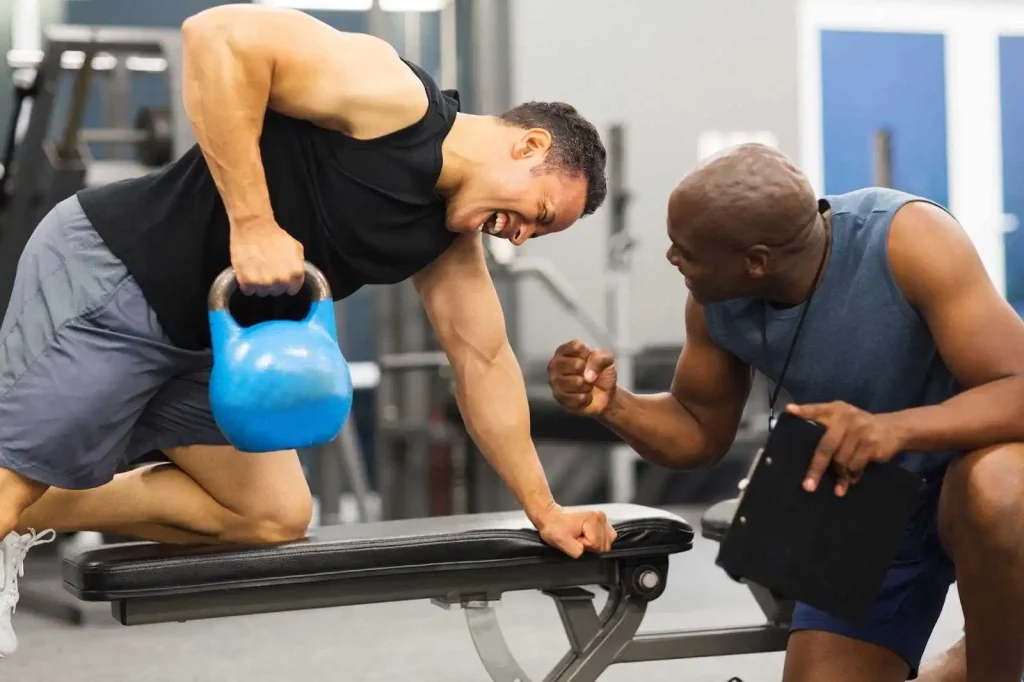If you’re a fitness trainer, You need to know some essential knowledge for fitness trainers. Getting regular exercise is a great way to live a healthy life. Moving around every day can also do a lot of good for your health. Do you want to stay fit? Well, personal fitness trainers today need to know about the nature of workouts.
It determines which workout components yield the best results and ensures safety. This blog post covers exercise anatomy, including posture, mobility, skeletal structure, and risk management.
Lets jump into it..
What You Need to Know As a Fitness Trainer
Know the Body’s Anatomical Structure
To be fit, you need to know how the body works. Joints, muscles, bones, and connective tissue all work together to make the body move and stay stable.
If we know how these things connect, we can focus on certain areas during workouts, which will help us do better and lower our risk of getting hurt.
Knowing how joints work helps you choose exercises for movement and flexibility. Knowing the types of muscles you have helps you make workouts that work. Knowing how the body works makes exercise more mindful and intentional.
Different Types of Exercise Movements
There are many kinds of exercise. Learn the moves you can do before you start working out.
You can keep your joints healthy and flexible by doing range-of-motion movements. Planes of motion workouts help improve balance and a lot of different muscle groups.
Isometrics improve performance and stamina by targeting certain muscles. Mixing up your routines prevents muscle imbalance and improves fitness. Every task should contain diverse types of activity for fitness training and well-being.
Muscular Contractions and Their Impact on Movement
Muscle performance has to contract in order to move, whether you’re getting coffee or running a race. There are three types: concentric, eccentric, and isometric.
A muscle contracts when it needs to make force, like when you pull a weight. When a muscle produces force, like when it lowers a weight, it lengthens in an eccentric way.
When you do planks, your muscles stay the same length, which is called an isometric contraction. Knowing about these muscle movements makes you better at what you do and keeps you from getting hurt.
Training with Proper Form to Minimize Injury Risk
Use proper technique during training to avoid injury and maximize performance. Common blunders are simple to make, especially if you’re new or have problems moving. A certified personal trainer can advise you on what to work on.
Motion instead of muscular power, rounding the back during lifting, and not paying attention to the core are common faults. You can avoid injury by learning proper form from a qualified coach.
Putting It All Together
As a personal trainer, safety is paramount when designing training programs for clients. Injuries can occur during exercise without proper precautions and techniques.
Offer safe and effective training programs by obtaining a certification from reputable organizations like the American Sport and Fitness Association, you can visit their link https://www.americansportandfitness.com/products/personal-trainer-certification. With a certification, you can help clients reach fitness goals without compromising safety.
Summary
Personal trainers and fitness instructors must understand exercise anatomy. How your muscles and joints move and operate together will assist you in choosing a workout. Knowing how muscles contract during different actions helps with exercise and injury prevention.
Good form and posture assessments ensure this knowledge is implemented in teaching. Knowing this, fitness instructors may build safe and successful routines for clients. Trainees can assist customers in reaching their health goals safely and better by understanding exercise mechanics.
Read Now: 5 Nutrition Tips for Aerobics Instructors To Maintain Fitness
Michael C Vang is a passionate blogger. He has been blogging since 2013 on a variety of topics. He is committed to creating informative and engaging content that helps readers learn more about everything.



